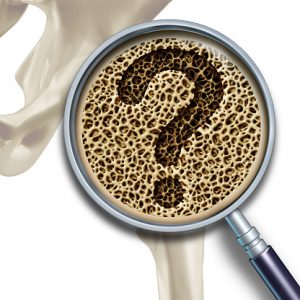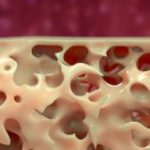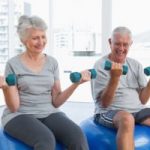 Osteoporosis is a serious public health issue that’s estimated to affect nearly 200 million people worldwide. At least 40 percent of women and 15–30 percent of men are expected to sustain one or more fragility fractures in their lifetime, possibly leading to future health-related complications. We at Bel Marra understand the gravity of having long-term health conditions and feel we need to do our part to spread as much knowledge as we can.
Osteoporosis is a serious public health issue that’s estimated to affect nearly 200 million people worldwide. At least 40 percent of women and 15–30 percent of men are expected to sustain one or more fragility fractures in their lifetime, possibly leading to future health-related complications. We at Bel Marra understand the gravity of having long-term health conditions and feel we need to do our part to spread as much knowledge as we can.
To get you more up to speed, we have provided you some of our best articles on osteoporosis. You will find information on osteopenia vs. osteoporosis, if osteoporosis can be reversed, and various osteoporosis exercises you can perform to help mitigate symptoms. We have also provided details about an osteoporosis diet and how you can prevent osteoporosis fractures.
Osteopenia vs. osteoporosis: Understanding the difference
Advertisement
We often hear doctors using the term osteopenia and osteoporosis when referring to human bones, but there is a difference between the two. Understanding the difference can protect you and keep you mobile.
When we look at the words osteopenia and osteoporosis, it’s easy to see how the two can be confused. Aside from the similar spelling, the conditions both relate to bone density. The difference between osteopenia and osteoporosis comes down to the degree of decreased bone density. If a person has osteopenia, they do have decreased bone density, but not to the extent of someone who is suffering from osteoporosis. Continue reading…
 Can osteoporosis be reversed? 12 natural ways to treat osteoporosis
Can osteoporosis be reversed? 12 natural ways to treat osteoporosis
Concerned about your bone health? You should be. The sooner you start the better. Your risk for osteoporosis, where your bones become fragile and porous, has a lot to do with the bone mass you’ve developed in your 20s and 30s and what you’ve done to prevent losing that bone mass later on. Bones, like the rest of our body parts, are living material. They’re in a constant state of remodeling, breaking down and building up.
Interesting tidbit: Physiologists say we create about 11 skeletons over the full course of our lifetimes. So, our bodies work hard to keep our bones healthy. There are simple lifestyle changes you can make to reduce bone loss naturally—and it starts with foods for strong bones. Continue reading…
 Osteoporosis fractures: Exercises and their benefits in reducing bone fracture risk
Osteoporosis fractures: Exercises and their benefits in reducing bone fracture risk
Over 50 million Americans are affected by osteoporosis and bone fractures, making prevention methods a focus and putting exercise benefits in the spotlight.
A recent hip hop study—no not the music, we literally mean hopping—has shed some light on how to reduce fracture risk, specifically fractures from osteoporosis. The study, conducted through a special mapping technique at the University of Cambridge, demonstrated that just two minutes of hopping per day could strengthen hip bones and reduce the risk of fractures after a fall. Continue reading…
 Osteoporosis diet plan: Foods to eat and avoid
Osteoporosis diet plan: Foods to eat and avoid
In osteoporosis prevention, diet plays a crucial role – along with exercise. While growing up you probably didn’t think too much about eating foods that could prevent osteoporosis. Sure, you enjoyed dairy products, but you’d be the first to agree, it had more to do with taste, than to promote bone health. Now that you’re older, your doctor might have expressed some concerns about your bones. You might even have heard him mention the word ‘osteoporosis’.
Advertisement
Osteoporosis is a condition where bones become brittle and fragile because of bone loss. Even minor injuries are harder to recover from with osteoporosis. Preventing osteoporosis is key to avoiding injury and disability and continuing to live an active life. Continue reading…
 Specific exercises to promote bone health and combat osteoporosis
Specific exercises to promote bone health and combat osteoporosis
Osteoporosis is a disease that causes bone weakness and subsequently increases the risk of developing bone fractures. While it is commonly associated with elderly women, it can happen to men as well. According to the National Osteoporosis Foundation, osteoporosis is a serious public health concern affecting more than 200 million people worldwide.
A new study that the Department of Nutrition and Exercise Physiology recently published shows that in men, long-term weight-bearing exercises decrease sclerostin, a protein made in the bone, and increase IGF-1 (insulin-like growth factor 1), a hormone associated with bone growth. Continue reading…
